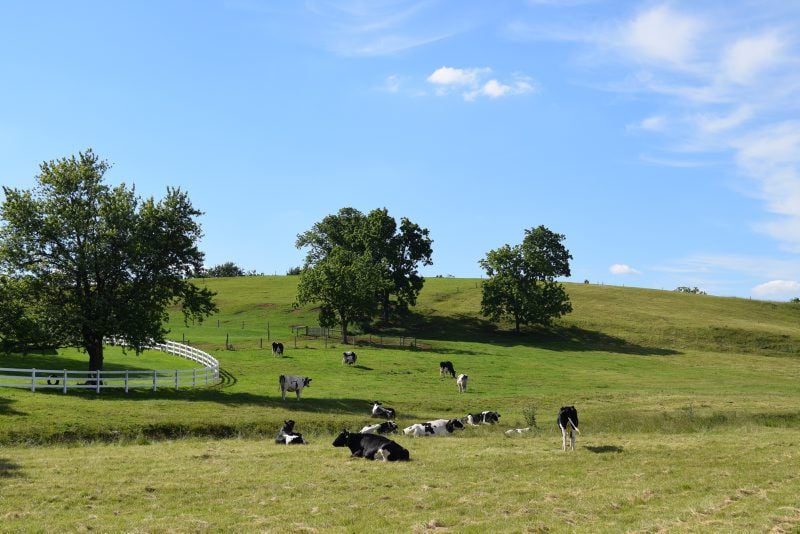 The U.S. dairy herd continues to grow and milk production to increase even faster. According to the June USDA Milk Production report, the national herd has grown by 87,000 head in the past year, the largest it’s been since 1994.
The U.S. dairy herd continues to grow and milk production to increase even faster. According to the June USDA Milk Production report, the national herd has grown by 87,000 head in the past year, the largest it’s been since 1994.
Alan Zepp, risk management specialist for the Center for Dairy Excellence, said that growth equals the size of Virginia’s dairy herd.
Milk production is up 1.6 percent from a year ago, Zepp said on Wednesday during the center’s monthly Protecting Your Profits call.
Zepp said butter and cheese stocks are still high, although there’s been a recent decline in cheese stocks, including a drop of 13 million pounds from May to June.
“This is a good sign, since (cheese stocks) don’t typically drop until August,” he said. A strong demand for butter has also helped to pull up butter prices.
These market conditions “should help milk checks this fall,” Zepp said.
A weaker U.S. dollar continues to help U.S. dairy exports, which are now the highest they’ve been in two years, he said.
The prices for block cheese and butter on the Chicago Mercantile Exchange remain below prices in Germany and New Zealand, while nonfat dry milk powder prices are slightly higher in the U.S. than in the European Union.
“Dairy exports have been stable over the last few months,” Zepp said. “The current price climate may encourage some overseas buyers to buy American.”
The United States is the only country that consistently increases milk production, Zepp said, although New Zealand’s milk production has also been rising recently.
Margins for dairy farmers are down about $1 from last month’s projections, he said. Milk prices have softened slightly, but it’s the uncertainty in the feed market that is driving the drop.
Corn and soybean prices have been as volatile as the weather, and Zepp said he expects the uncertainty will continue until there is a clearer picture of the size of this year’s corn and soybean crops.
“The industry has been looking for an uptick since last summer” in milk prices, he said. That has left farmers uncertain about what actions to take.
Farmers not enrolled in the Margin Protection Program for Dairy can consider purchasing a Livestock Gross Margin insurance policy, but the sign-up period concludes today, July 29.
Those who purchased LGM-Dairy policies after March 2017 could see an indemnity payment depending on their policy selections, Zepp said.
Farmers enrolled in Margin Protection Program for Dairy are not expected to receive a payment the rest of this year.
All farmers can consider using futures contracts and options contracts to hedge against price drops.
Zepp said he’s received several calls from farmers interested in protecting butter prices through Class IV contracts.
“There are 10 times more Class III than Class IV listed on the CME,” he said.
The risk with Class IV contracts could be finding a buyer when a farmer wants to sell or a seller when a farmer wants to buy.









